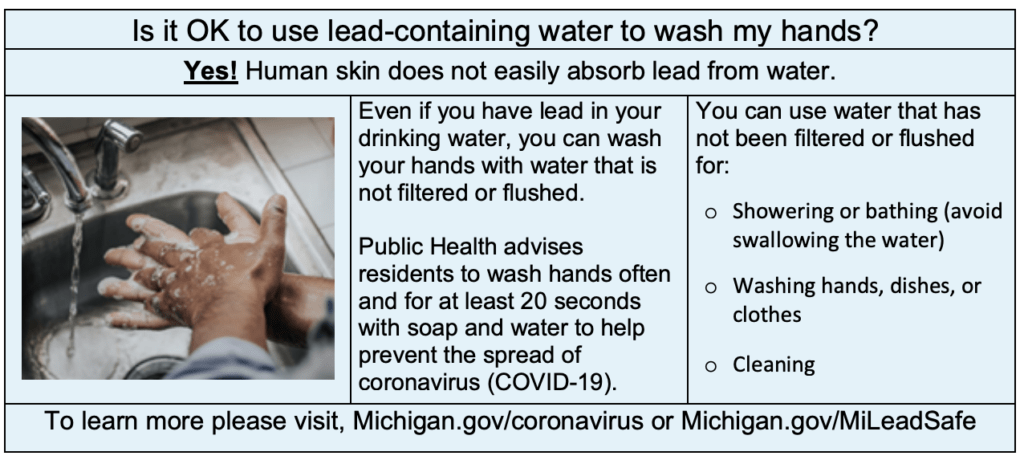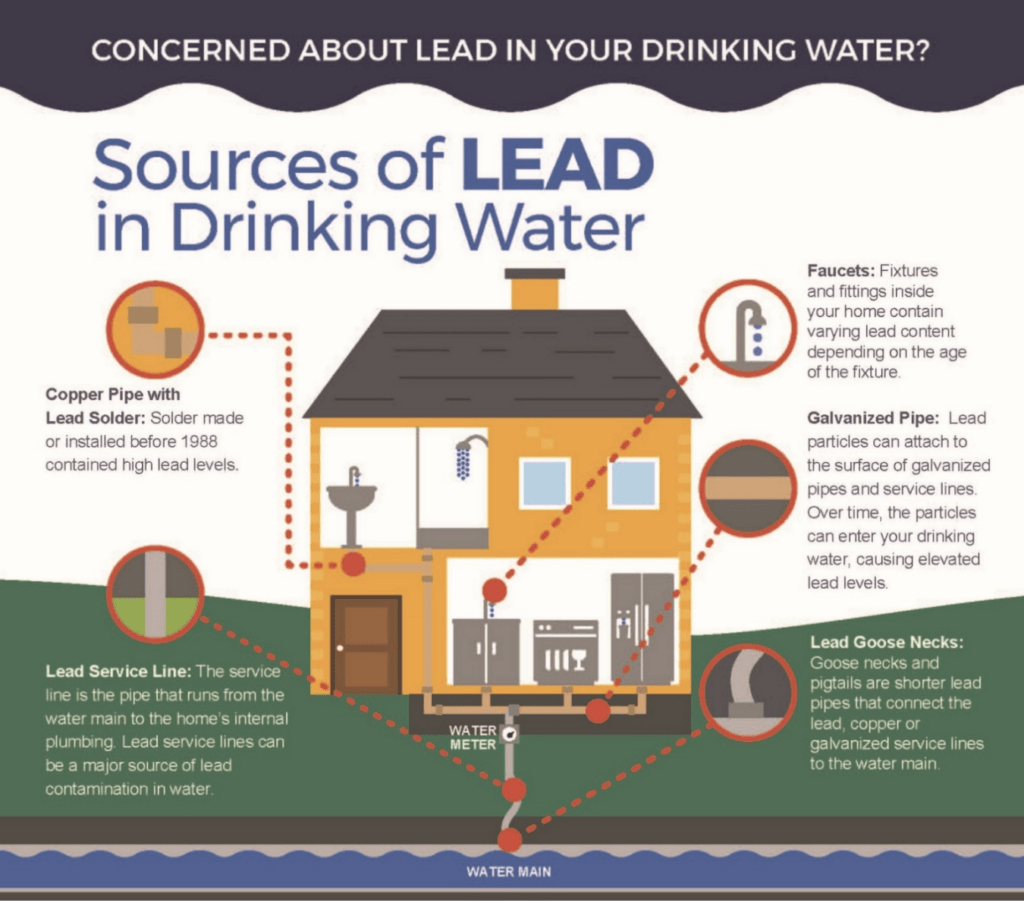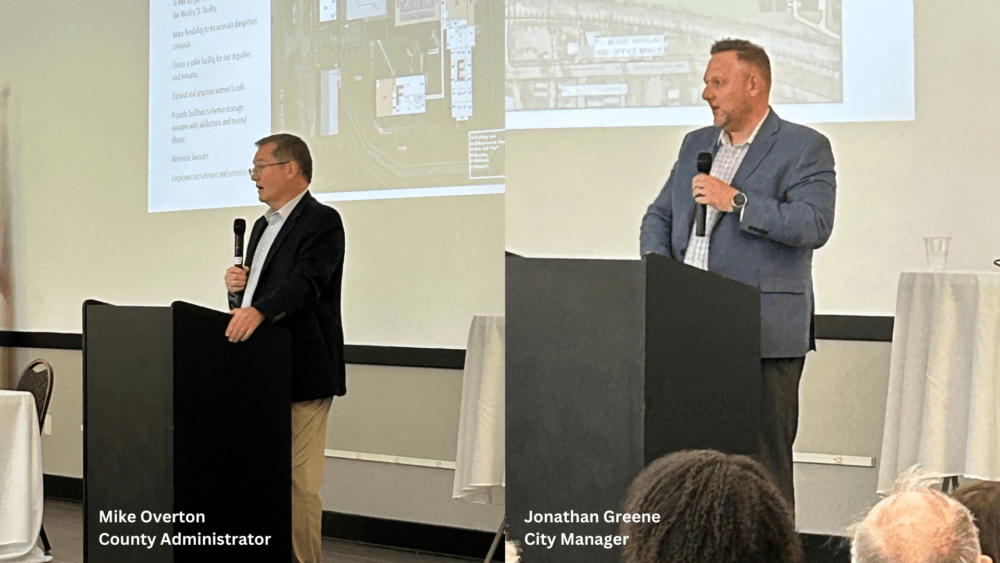From Blackman Charter Township:
BLACKMAN CHARTER TOWNSHIP HAS EXCEEDED THE ACTION LEVEL FOR LEAD. Lead can cause serious health and development problems, especially for pregnant women and young children. Please read this information closely to see what you can do to reduce lead in your drinking water. This notice is brought to you by Blackman Charter Township. Water Supply Serial Number: 740 Distribution Date: November 17, 2020
Health Effects of Lead Lead can cause serious health and development problems. It can cause damage to the brain and kidneys, and can interfere with the production of red blood cells that carry oxygen to all parts of your body. The greatest risk of lead exposure is to infants, young children, and pregnant women. Scientists have linked the effects of lead on the brain with lowered IQ in children. Adults with kidney problems and high blood pressure can be affected by low levels of lead more than healthy adults. Lead is stored in the bones, and it can be released later in life. During pregnancy, the child receives lead from the mother’s bones, which may affect brain development. Although other sources of lead exposure exist, such as lead paint, and lead contaminated dust, Blackman Charter Township is contacting you to reduce your risk of exposure to lead in drinking water. If you have questions about other sources of lead exposure, please contact Don Hayduk, Environmental Health Director, Jackson County Health Department at (517) 768-1659.
Sources of Lead Lead is a common metal found in the environment. Drinking water is one possible source of lead exposure due to the widespread use of lead in plumbing materials. EPA estimates that drinking water can make up 20 percent or more of a person’s potential exposure to lead. Infants who consume mostly mixed formula can receive 40 percent to 60 percent of their exposure to lead from drinking water. The action level is 15 parts per billion (ppb) for lead and 1.3 parts per million (ppm) for copper. The action level is a measure of corrosion control effectiveness. It is not a health-based standard. To meet the requirements of the Lead and Copper Rule, 90 percent of the samples collected must be below the action level. The following table summarizes the lead and copper data collected during the most recent monitoring period:
Most Recent Sampling Information

Lead can enter drinking water when pipes, solder, home/building interior plumbing, fittings and fixtures that contain lead corrode. Corrosion is the dissolving, or wearing away, of metal caused by a chemical reaction between water and your plumbing. Several factors affect the amount of lead that enters the water, including the water quality characteristics (acidity and alkalinity), the amount of lead in the pipes, plumbing and/or fixtures, and the frequency of water use in the home.
Some plumbing products such as service lines, pipes and fixtures may contain lead. The info graphic below demonstrates where sources of lead in drinking water could be in your home. Older homes may have more lead unless the service line and/or plumbing have been replaced. Homes built…
- Before the 1960s are more likely to have lead service lines, lead pipes, fixtures, and/or solder that contain lead.
- Before 1988 are likely to have fixtures and/or solder that contains lead.
- Between 1996 and 2014 are likely to have fixtures that contain up to eight percent lead but were labelled “lead-free.”
- In 2014 or later still have potential lead exposure. “Lead free” was redefined to reduce lead content to a maximum of 0.25 percent lead in fixtures and fittings. Fixtures that are certified to meet NSF Standard 61 meet this more restrictive definition of “lead free.”
Leaded solder and leaded fittings and fixtures are still available in stores to use for non-drinking water applications. Be careful to select the appropriate products for repairing or replacing drinking water plumbing in your home.
Galvanized plumbing can be a potential source of lead. Galvanized plumbing can absorb lead from upstream sources like a lead service line. Even after the lead service line has been removed, galvanized plumbing can continue to release lead into drinking water over time. Homes that are served by a lead service line should consider replacing galvanized plumbing inside the home.
Drinking water is only one source of lead exposure. Other common sources of lead exposure are leadbased paint, and lead-contaminated dust or soil. Because lead can be carried on hands, clothing, and/or shoes, sources of exposure to lead can include the workplace and certain hobbies. Wash your children’s hands and toys often as they can come in contact with dirt and dust containing lead. In addition, lead can be found in certain types of pottery, pewter, food, and cosmetics. If you have questions about other sources of lead exposure, please contact Don Hayduk, Environmental Health Director, Jackson County Health Department at (517) 768-1659.
Particulate Lead Lead results can vary between tests. A single test result is not a reliable indicator of drinking water safety. Two different types of lead can be present in drinking water, soluble lead and particulate lead. Soluble lead is lead that dissolves because of a chemical reaction between water and plumbing that contains lead. Particulate lead is dislodged scale and sediment released into the water from the sides of the plumbing and can vary greatly between samples. Disturbances, such as replacing a water meter, construction and excavation activities, or home plumbing repairs can cause particulates to shake free from inside pipes and plumbing. Particulate lead is a concern because the lead content can be very high. Lead particulate could be present in a single glass of water, but not present in water sampled just before or after. During construction, monthly aerator cleaning and using a filter certified to reduce lead are recommended to reduce particulate lead exposure.
Check whether your home has a lead service line. Homes with lead service lines have an increased risk of having high lead levels in drinking water. Please contact Jack L. Ripstra, the Blackman Township Engineer at 517-789-9898 extension 1, for more information about your home’s service line.
Steps You Can Take to Reduce Your Exposure to Lead in Your Water
Run your water to flush out lead. The more time water has been sitting in your home’s pipes, the more lead it may contain. Therefore, if your water has not been used for several hours, run the water before using it for drinking or cooking. This flushes lead-containing water from the pipes.
Run the water for at least two minutes, or until it becomes cold or reaches a steady temperature.
Additional flushing may be required for homes that have been vacant or have a longer service line. Your water utility can help you determine if longer flushing times are needed.
Use cold water for drinking and cooking. Do not cook with or drink water from the hot water tap; lead dissolves more easily into hot water.
Use cold water for preparing baby formula. Do not use water from the hot water tap to make baby formula. If you have a lead service line, consider using bottled water or a filter certified to reduce lead to prepare baby formula.
Do not boil water to remove lead. Boiling water will not reduce lead levels.

Consider using a filter to reduce lead in drinking water. Public health recommends that any household with a child or pregnant woman use a certified lead filter to reduce lead from their drinking water. Look for filters that are tested and certified to NSF/ANSI Standard 53 for lead reduction. Some filter options include a pour-through pitcher or faucet-mount systems. If the label does not specifically mention lead reduction, check the Performance Data Sheet included with the device. Be sure to maintain and replace the filter device in accordance with the manufacturer’s instructions to protect water quality. If your household has a child or pregnant woman and are not able to afford the cost of a lead filter, please visit the Blackman Charter Township website at www.blackmantwp.com or the Jackson County Health Department website at www.co.jackson.mi.us/276/Health-Department .
Consider purchasing bottled water. The Food and Drug Administration (FDA) regulates bottled water. The bottled water standard for lead is 5 ppb.
Get your child tested. Contact your local health department or healthcare provider to find out how you can get your child tested for lead if you are concerned about exposure. . Don Hayduk Director, Environmental Health Division. Jackson County Health Department (517) 768-1659.
Identify older plumbing fixtures that likely contain lead. Older faucets, fittings, and valves sold before 2014 may contain higher levels of lead, even if marked “lead-free.” Faucets, fittings, and valves sold after January 2014 are required to meet a more restrictive “lead-free” definition but may still contain up to 0.25 percent lead. When purchasing new plumbing materials, it is important to look for materials that are certified to meet NSF standard 61. The EPA prepared a brochure that explains the various markings that can indicate that materials meet the new “lead free” definition: https://nepis.epa.gov/Exe/ZyPDF.cgi?Dockey=P100LVYK.txt.
Clean your aerator. The aerator on the end of your faucet is a screen that will catch debris. This debris could include particulate lead. The aerator should be removed at least every six months to rinse out any debris.
Test your water for lead. If you are a Blackman Charter Township water customer and would like information on having your drinking water tested for lead, contact Jack L. Ripstra, the Blackman Township Engineer at 517-789-9898 extension 1.
What Happened? What is Being Done? Upon receipt of the elevated results, Blackman Charter Township immediately coordinated with the Michigan Department of Health and Human Services and EGLE to contact those residents, provide lead education, and conduct extensive follow-up sampling at those locations. All follow up locations were under the Action Level.
Blackman Charter Township conducts testing of tap water in homes for lead and copper. This summer, we collected samples from 21 homes. Five homes were above the Action Level for Lead, and One for Copper.
Blackman Charter Township does not have any Lead service lines in use however; lead can enter drinking water when it is in contact with pipes, solder, home/building interior plumbing, fittings and fixtures that contain lead. Blackman Charter Township receives its water from the City of Jackson. Jackson employs corrosion control treatment to reduce [lead or copper] leaching.
If you are a Blackman Charter Township water customer and would like information about your service line, contact Jack L. Ripstra, the Blackman Township Engineer at 517-789-9898 extension 1.
This is the first of several informational notices you will receive about lead in drinking water. We will be collecting samples from 40 sites in Blackman Township every six months and reviewing the results to determine if corrective actions are necessary to reduce corrosion in household plumbing.
For More Information Call Jack L. Ripstra, the Blackman Township Engineer at 517-789-9898 extension 1, or visit the Blackman Charter Township website at, www.blackmantwp.com , the Jackson County Health Department website at www.co.jackson.mi.us/1319/Lead-Poisoning or the State of Michigan website at www.michigan.gov/deqleadpublicadvisory . For more information on reducing lead exposure around your home/building and the health effects of lead, visit EPA’s Web site at www.epa.gov/lead,
 or call the National Lead Information Center at 800-424-LEAD, or contact your healthcare provider.
or call the National Lead Information Center at 800-424-LEAD, or contact your healthcare provider.








